 |
King of Chemicals Manufacturers |
Specifications, Properties, Uses, SDS of Light and Heavy Kaolin USP NF BP Ph Eur EP JP IP FCC Food Grade Manufacturer Supplier Exporter Wholesale & Small Packs, CAS Number yyy. |
|
| King of Chemicals has several associated companies having accreditations like cGMP, GLP - FDA Approved Good Manufacturing Practice and Good Laboratory Practice of WHO standard, ISO-9001, ISO-14001, ISO/IEC 17025, ISO ISO-45000, HACCP, FSSC 220000, FSSAI, "REACH" Registered, Kosher & Halal Certified. e-CTD and DMF support can be made available if needed. We offer USP NF BP Ph Eur EP IP JP Analytical Reagent FCC Food Grade Chemicals & Nutraceuticals. | |
        |
|
Muby Chem Pvt. Ltd. is a several decades old group of companies, engaged in manufacturing, supplying, distributing, wholesale supplies of Light and Heavy Kaolin USP NF BP Ph Eur EP JP IP FCC Food Grade for actual users, including retail or small pack supplies for research and development work.
We supply fine and speciality chemicals, pharmaceutical excipients, mineral fortifiers in chemically pure, analytical reagent grade, IP BP USP Ph Eur EP JP and other pharmaceutical grade monograph including FCC Food grade chemicals and Nutraceuticals at best prices. We and/or our associated units have all the facilities to supply as per cGMP standard observing good manufacturing practice and good laboratory practice. We can assure low microbial count and also offer a test certificate for the same. We maintain warehouses across USA, India, and UAE. Our group exports to USA, Canada, Mexico, Argentina, Brazil, Chile, Korea, Malaysia, Thailand, Indonesia, Europe, and several other parts of the world. We supply in wholesale container loads to small pack of few grams. Solid products may be specified for it size and shape as desired by the buyer.


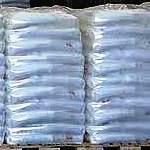
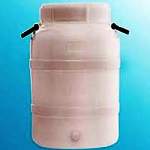
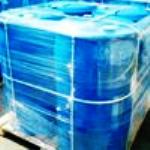
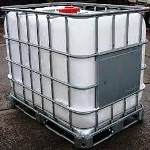
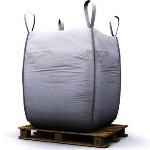
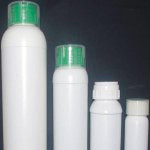
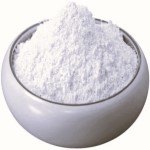
Light and Heavy Kaolin CAS Number
For Properties Specifications Uses of Light and Heavy Kaolin Click Properties, Specifications, Uses, Price, Process of Light and Heavy Kaolin Manufacturer.
For For SDS MSDS Sheet of Light and Heavy Kaolin Click SDS Safety Data Sheet MSDS Sheet of Light and Heavy Kaolin Manufacturer.
The Properties, Specifications, Monograph and Uses of Light and Heavy Kaolin:
Light Kaolin BP Ph Eur Grade Specifications
Action and use: Antidiarrhoeal.
DEFINITION
Light Kaolin is a native hydrated aluminium silicate, freed from most of its impurities by elutriation and dried. It contains a suitable dispersing agent.
CHARACTERISTICS
A light, white powder free from gritty particles; odourless or almost odourless; unctuous. Practically insoluble in water and in mineral acids.
IDENTIFICATION
A. To 0.5 g in a metal crucible add 1 g of potassium nitrate and 3 g of sodium carbonate and heat until the mixture melts. Allow to cool. To the residue add 20 ml of boiling water, mix and filter. Wash the residue with 50 ml of water, add to the residue 1 ml of hydrochloric acid and 5 ml of water, mix and filter. To the filtrate add 1 ml of strong sodium hydroxide solution, filter and add to the filtrate 3 ml of ammonium chloride solution. A gelatinous white precipitate is produced.
B. 0.25 g yields the reaction characteristic of silicates.
C. Triturate 2 g with 2 ml of water. The resulting mixture flows.
TESTS
Coarse particles: Transfer 5 g to a stoppered cylinder (about 16 cm × 35 mm), add 60 ml of a 1% w/v solution of sodium pyrophosphate, shake thoroughly and allow to stand for 5 minutes. Using a pipette, withdraw 50 ml from a point about 5 cm below the surface of the liquid. To the remaining liquid add 50 ml of water, shake, allow to stand for 5 minutes and withdraw 50 ml in the same manner as before. Repeat the operation until a total of 400 ml of suspension has been withdrawn under the prescribed conditions. Transfer the remainder to an evaporating dish and evaporate to dryness on a water bath. The residue, after drying at 105C, weighs not more than 25 mg.
Fine particles: Disperse 5 g in 250 ml of water by shaking vigorously for 2 minutes in a stoppered flask, pour immediately into a glass cylinder 5 cm in diameter and transfer 20 ml to a glass dish using a pipette. Evaporate to dryness and dry to constant weight at 105C. Allow the remainder of the suspension to stand for 4 hours at 20C and withdraw a second 20 ml portion using a pipette with its tip exactly 5 cm below the surface and without disturbing the sediment. Transfer the second portion to a glass dish, evaporate to dryness and dry to constant weight at 105C. The weight of the residue from the second portion is not less than 70% of the weight of the residue from the first portion.
Arsenic: 0.50 g dispersed in 25 ml of water complies with the limit test for arsenic, (2 ppm).
Heavy metals: To pass the test
Chloride: Boil 1.0 g with 80 ml of water and 20 ml of 2M nitric acid under a reflux condenser for 5 minutes, cool and filter. 15 ml of the filtrate complies with the limit test for chlorides, (330 ppm).
Loss on drying: When dried to constant weight at 105C, loses not more than 1.5% of its weight. Use 1 g.
Loss on ignition: When ignited at 600C, loses not more than 15.0% of its weight. Use 1 g.
Soluble matter: Boil 2 g with 100 ml of 0.2M hydrochloric acid under a reflux condenser for 5 minutes, cool, filter and evaporate 50 ml of the filtrate to dryness. The residue, after ignition at about 600C for 30 minutes, weighs not more than 10 mg.
Heavy Kaolin BP Ph Eur Grade Specifications
Ph Eur
DEFINITION
Purified, natural, hydrated aluminium silicate of variable composition.
CHARACTERS
Appearance: Fine, white or greyish-white, unctuous powder.
Solubility: Practically insoluble in water and in organic solvents.
IDENTIFICATION
A. To 0.5 g in a metal crucible add 1 g of potassium nitrate and 3 g of sodium carbonate and heat until the mixture melts. Allow to cool. To the residue add 20 ml of boiling water, mix and filter. Wash the residue with 50 ml of water. To the residue add 1 ml of hydrochloric acid and 5 ml of water. Filter. To the filtrate add 1 ml of strong sodium hydroxide solution and filter. To the filtrate add 3 ml of ammonium chloride solution. A gelatinous white precipitate is formed.
B. Add 2.0 g in 20 portions to 100 ml of a 10 g/l solution of sodium laurilsulfate in a 100 ml graduated cylinder about 30 mm in diameter. Allow 2 min between additions for each portion to settle. Allow to stand for 2 h. The apparent volume of the sediment is not greater than 5 ml.
C. 0.25 g gives the reaction of silicates.
TESTS
Solution S: To 4 g add a mixture of 6 ml of acetic acid and 34 ml of distilled water, shake for 1 min and filter.
Acidity or alkalinity: To 1.0 g add 20 ml of carbon dioxide-free water, shake for 2 min and filter. To 10 ml of the filtrate add 0.1 ml of PhPh solution. The solution is colourless. Not more than 0.25 ml of 0.01 M sodium hydroxide is required to change the colour of the indicator to pink.
Organic impurities: Heat 0.3 g to redness in a calcination tube. The residue is only slightly more coloured than the original substance.
Adsorption power: To 1.0 g in a ground-glass-stoppered test-tube add 10.0 ml of a 3.7 g/l solution of methylene blue and shake for 2 min. Allow to settle. Centrifuge and dilute the solution 1 to 100 with water. The solution is not more intensely coloured than a 0.03 g/l solution of methylene blue.
Swelling power: Triturate 2 g with 2 ml of water. The mixture does not flow.
Substances soluble in mineral acids: Maximum 1 per cent.
Chlorides: Maximum 250 ppm.
Sulphates: Maximum 0.1 per cent.
Calcium: Maximum 250 ppm.
Heavy metals: Maximum 50 ppm.
Microbial contamination: Total viable aerobic count (2.6.12) not more than 1000 micro-organisms per gram, determined by plate-count.
Light Kaolin (Natural) BP Ph Eur Grade Specifications
Action and use: Antidiarrhoeal.
DEFINITION
Light Kaolin (Natural) is a native hydrated aluminium silicate, freed from most of its impurities by elutriation and dried. It does not contain a dispersing agent.
CHARACTERISTICS
A light, white powder free from gritty particles; odourless or almost odourless; unctuous. Practically insoluble in water and in mineral acids.
IDENTIFICATION
A. To 0.5 g in a metal crucible add 1 g of potassium nitrate and 3 g of sodium carbonate and heat until the mixture melts. Allow to cool. To the residue add 20 ml of boiling water, mix and filter. Wash the residue with 50 ml of water, add to the residue 1 ml of hydrochloric acid and 5 ml of water, mix and filter. To the filtrate add 1 ml of strong sodium hydroxide solution, filter and add to the filtrate 3 ml of ammonium chloride solution. A gelatinous white precipitate is produced.
B. 0.25 g yields the reaction characteristic of silicates.
C. Triturate 2 g with 2 ml of water. The resulting mixture does not flow.
TESTS
Coarse particles; Arsenic; Heavy metals; Chloride; Loss on drying; Loss on ignition; Soluble matter: Complies with the requirements stated under Light Kaolin.
Fine particles: Disperse 5 g in 250 ml of water containing 50 mg of sodium pyrophosphate by shaking vigorously for 2 minutes in a stoppered flask, pour immediately into a glass cylinder 5 cm in diameter and transfer 20 ml to a glass dish using a pipette. Evaporate to dryness and dry to constant weight at 105C. Allow the remainder of the suspension to stand for 4 hours at 20C and withdraw a second 20 ml portion using a pipette with its tip exactly 5 cm below the surface and without disturbing the sediment. Transfer the second portion to a glass dish, evaporate to dryness and dry to constant weight at 105C. The weight of the residue from the second portion is not less than 70% of the weight of the residue from the first portion.
Kaolin USP NF Grade Specifications
Kaolin is a native hydrated aluminum silicate, powdered and freed from gritty particles by elutriation.
Identification: Mix 1 g with 10 mL of water and 5 mL of sulfuric acid in a porcelain dish. Evaporate the mixture until the excess water is removed, and continue heating the residue until dense, white fumes of sulfur trioxide appear. Cool, cautiously add 20 mL of water, boil for a few minutes, and filter: there remains on the filter a gray residue (impure silica). The filtrate responds to the tests for Aluminum.
Microbial limits: It meets the requirements of the test for absence of Escherichia coli.
Loss on ignition: Ignite between 550 and 600C: it loses not more than 15.0% of its weight.
Acid-soluble substances: Digest 1.0 g with 20 mL of 3 N hydrochloric acid for 15 minutes, and filter: 10 mL of the filtrate, evaporated to dryness and ignited, leaves not more than 10 mg of residue (2.0%).
Carbonate: Mix 1.0 g with 10 mL of water and 5 mL of sulfuric acid: no effervescence occurs.
Iron: Triturate 2.0 g in a mortar with 10 mL of water, and add 0.50 g of sodium salicylate: the mixture does not acquire more than a slight reddish tint.
Lead: To 1.0 g contained in a centrifuge tube add 10 mL of 1 N nitric acid, and digest for 1 hour in a boiling water bath. Centrifuge until the solids are completely separated, and pour the supernatant into a 100-mL volumetric flask. Add 5 mL of 1 N nitric acid to the Kaolin, mix, and digest for 15 minutes in a boiling water bath. Centrifuge, and add the supernatant to the previous extract in the volumetric flask. Dilute with water to volume. A 50-mL portion of this solution contains not more than 5 microgm of lead (corresponding to not more than 0.001% of Pb) when tested as directed in the test for Lead 251, using 3 mL of Ammonium Citrate Solution, 1 mL of Potassium Cyanide Solution, and 500 microL of Hydroxylamine Hydrochloride Solution.
Kaolin FCC Food Grade Specifications
China Clay
CAS 332-58-7
DESCRIPTION
Kaolin occurs as a fine, white to yellow-white or gray powder that becomes darker when moistened. It is a purified clay consisting mainly of alumina, silica, and water. It is insoluble in water, in alcohol, in dilute acids, and in alkali solutions.
Function: Anti-caking agent.
REQUIREMENTS
Identification: Mix 1 g of sample with 10 mL of water and 5 mL of sulfuric acid in a porcelain dish, and evaporate until the water is removed. Continue heating until dense, white fumes of sulfur trioxide evolve, then cool, and cautiously add 20 mL of water. Boil for a few minutes, and filter. A gray residue of silica remains on the filter. Add 6 N ammonium hydroxide to a portion of the filtrate. A gelatinous, white precipitate of aluminum hydroxide forms that is insoluble in an excess of 6 N ammonium hydroxide.
Acid-Soluble Substances: Not more than 2.0%.
Arsenic: Not more than 3 mg/kg.
Carbonate: Passes test.
Iron: Passes test.
Lead: Not more than 10 mg/kg.
Loss on Ignition: Not more than 15.0%.
Sulfide: Passes test.
Heavy Kaolin is also offered as per IP EP JP grade monograph.
The MSDS-SDS Hazard Statement of Light and Heavy Kaolin:
Kaolin SDS, Safety Data Sheet
MSDS Sheet, Material Safety Data Sheet 29-March-25
Section 1: Chemical Product and Company Identification
Product Name: Kaolin.
Synonym: Hydrated aluminum silicate, Bolus, Aluminum silicate hydroxide .
CAS Number: 1332-58-7
EINECS EC Code: 310-194-1
Relevant uses and uses advised against (if any): Industrial Manufacturing.
Section 2: Hazards Identification
GHS, Globally Harmonized System Classification in accordance with 29 CFR 1910
Hazard Class and Category Code(s), Regulation (EC) No 1272/2008 (CLP)
Not a hazardous substance or mixture according to Regulation (EC) No. 1272/2008.
This substance is not classified as dangerous according to Directive 67/548/EEC.
Labeling Regulation EC 1272/2008 (CLP) & GHS
GHS Label Elements NONE |
Signal Word: None
Precautionary statements:
P261: Avoid breathing dust/fume/gas/mist/vapors/spray.
P262: Do not get in eyes, on skin, or on clothing.
P281: Use personal protective equipment as required.
P302+P352: IF ON SKIN: Wash with plenty of soap and water.
P304+P340: IF INHALED: Remove victim to fresh air and keep at rest in a position comfortable for breathing.
P305+P351+P338: IF IN EYES: Rinse cautiously with water for several minutes. Remove contact lenses, if present and easy to do. Continue rinsing.
P337+313: If eye irritation persists get medical advice/attention.
Section 3: Composition and Information on Ingredients
Product Name: Kaolin.
Synonym: Hydrated aluminum silicate, Bolus, Aluminum silicate hydroxide .
CAS Number: 1332-58-7
EINECS EC Code: 310-194-1
Section 4: First Aid Measures
Always seek medical advice after the first aid treatment.
Skin: Rinse with water. Soap may be used. Seek Medical Aid.
Eyes: Wash eyes with plenty of water for at least 15 minutes, lifting lids occasionally. Seek Medical Aid.
Inhalation: Remove to fresh air. If not breathing, give artificial respiration. If breathing is difficult, give oxygen.
Ingestion: If swallowed, induce vomiting immediately after giving two glasses of water. Never give anything by mouth to an unconscious person.
Section 5: Fire and Explosion Data
Flammability of the Product: Kaolin is non-flammable.
Products of Combustion: Oxides of Carbon.
Fire Fighting Media and Instructions: Use water spray, alcohol-resistant foam, dry chemical, or carbon dioxide. Wear self-contained breathing apparatus for firefighting if necessary.
Section 6: Accidental Release Measures
Personal precautions, protective equipment, and emergency procedures: Ventilate area of leak or spill. Avoid breathing dust/fumes/gas/mist/vapors/spray. Use individual protective equipment (waterproof boots, suitable protective clothing, safety glasses, etc.). Restrict unprotected personnel from the area. Prevent any contact with hot surfaces. Do not approach facing the wind.
Environmental precautions: Do not let the product enter drains, soil, or water sources.
Methods and materials used for containment Cleanup procedures and Storage: Contain spilled material. Cover with an inert, non-combustible absorbent material, (e.g. sand, earth, diatomaceous earth, vermiculite). Vacuum or sweep-up and remove to an approved disposal container.
Section 7: Handling and Storage
Precautions for safe handling: Apply according to good manufacturing and industrial hygiene practices. Ensure proper ventilation. In case of insufficient ventilation, wear suitable respiratory equipment. Wash thoroughly after handling. Do not drink, eat, or smoke while handling. Avoid contact with skin, eyes, and clothing. Minimize dust generation. Avoid breathing dust/fumes/gas/mist/vapors/spray. Keep container tightly closed. Avoid ingestion and inhalation. Use individual protective equipment (waterproof boots, suitable protective clothing, safety glasses, etc.).
Conditions for safe storage, including any incompatibilities: Store in cool, dry, and ventilated area away from heat sources and protected from sunlight in tightly closed original container. Keep air contact to a minimum. Store protected from heat, sparks and ignition sources and incompatible materials. Avoid inhalation of dust/mist/vapor. Do not store with incompatible materials like strong oxidizing agents and acids.
Section 8: Exposure Controls/Personal Protection
Control parameters: TWA 2 mg/m3 USA. ACGIH Threshold Limit Values (TLV)
TWA 5 mg/m3 USA. USA. NIOSH Recommended Exposure Limits
Engineering Controls: Use process enclosures, local exhaust ventilation, or other engineering controls to keep airborne levels low.
Ventilation System: A system of local and/or general exhaust is recommended to keep employee exposures as low as possible.
Personal Respirators (NIOSH Approved): For conditions of use where exposure to dust or mist is apparent and engineering controls are not feasible, a particulate respirator may be worn.
Skin Protection: Wear protective gloves and clean body-covering clothing.
Eye Protection: Use chemical safety goggles and/or full face shield where dusting or splashing of solutions is possible. Maintain eye wash fountain and quick-drench facilities in work area.
Other Control Measures: Maintain good housekeeping in work area. Handle in accordance with good industrial hygiene and safety practice.
Section 9: Physical and Chemical Properties
Appearance: Off-white to grayish powder or granules.
Odor: No information found.
Odor threshold: No information found.
pH: No information found.
Relative density: No information found.
Melting point/freezing point: No information found.
Initial boiling point and boiling range: No information found.
Flash point: No information found.
Auto-ignition temperature: No data found.
Decomposition temperature: No information found.
Upper/lower flammability or explosive limits: No information found.
Vapor pressure: No information found.
Vapor density: No information found.
Evaporation rate: No information found.
Flammability (solid, gas): No information found.
Partition coefficient: n-octanol/water: No information found.
Solubility: Insoluble in cold water, hot water, methanol, diethyl ether, n-octanol.
Viscosity: No information found.
Section 10: Stability and Reactivity Data
Stability: It is stable in room temperature in closed containers under normal storage & handling.
Conditions of instability: Incompatible materials.
Incompatibility with various substances: Avoid high temperatures. Avoid contact with strong oxidizing agents, acids, and alkalis.
Hazardous decomposition products formed under fire conditions: Aluminum oxide, silicon oxides
Polymerization: Will not occur.
Section 11: Toxicological Information
LD50 Oral - Rat - No information found.
Carcinogenicity: No component of this product present at levels greater than or equal to 0.1% is identified as possible or confirmed human carcinogen by IARC, ACGIH, OSHA and NTP.
Mutagenic Effects: No information found.
Teratogenic Effects: No information found.
Developmental Toxicity: No information found.
Reproductive Effects: No information found.
Section 12: Ecological Information
Toxicity to fish: No information found.
Persistence and Degradability: No information found.
Mobility: No information found.
Bioaccumulation/ Accumulation: No information found.
Results of PBT and vPvB assessment: No information found.
Section 13: Disposal Considerations
Waste Disposal: Waste must be disposed of in accordance with federal, state, and local environmental control regulations.
Section 14: Transport Information
Land Transport DOT USA, TDG Canada & ADR/RID Europe: Not controlled.
Sea Transport IMDG/IMO: Not controlled.
Air Transport IATA/ICAO: Not controlled.
Section 15: Other Regulatory Information
USA:
SARA 311/312 Hazards: No SARA hazards.
California Prop. 65 Components: Not listed.
DISCLAIMER: The information and recommendations set forth herein are presented in good faith and believed correct as of the date hereof. It is compiled from various sources, and it is not necessarily all inclusive nor fully adequate in every circumstance. In addition, these suggestions should not be confused with nor followed in violation of applicable laws, regulations, rules, or insurance requirements applicable. This SDS MSDS sheet is intended only as a guide to the appropriate precautionary handling of the material by a professionally trained person using this product. Individuals receiving the information must exercise their independent judgment in determining its appropriateness for a particular purpose. This shall not constitute a guarantee for any specific product features and shall not establish a legally valid contractual relationship. In no case shall our company be liable to loss or damages by the product user.

Light and Heavy Kaolin Manufacturers, Suppliers, Exporters, Wholesalers:
King of Chemicals manufacturers

Plot No. 2900/46&47 + 2900/163to167, GIDC, Ankleshwar, Dist. Bharuch, India
India, USA, UAE
TEL: (Office) 91-22-23774610, 91-22-23723564
e-mail: info@kingofchemicals.com
Copyright and Usual Disclaimer is Applicable --- March 29, 2025
If I give you “My Word” Nobody can undo it.
If I sign an “Agreement” my Lawyer will undo it
Our products are for industrial and laboratory use only. The user must test the material before use. We are not dispensing chemists or druggist and do not offer over the counter type (OTC) products for medical use by individuals.
We and our associates manufacture pure chemicals surpassing Monograph Specifications of Analytical Reagent Standards, British & European Pharmacopoeia BP Ph Eur EP Standard, US Pharmacopoeia USP NF Standard, Indian Pharmacopoeia IP Standard, Japan Pharmacopoeia JP Standard, FCC Food Grade Standard. |
|